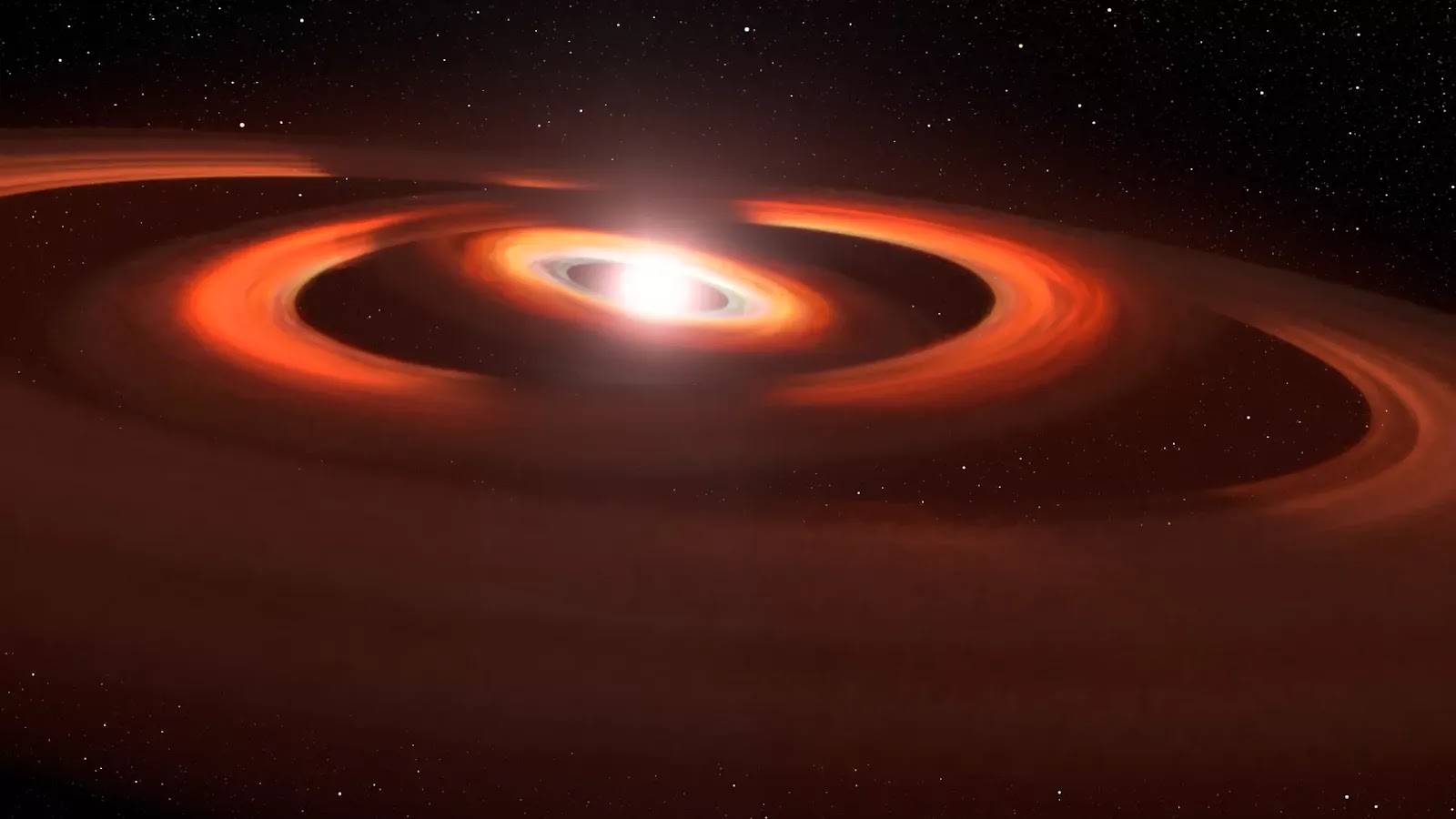The Hubble Space Telescope has recently captured a fascinating shadow play around a planet-forming disk that has left astronomers scratching their heads. The phenomenon involves two eerie shadows moving counterclockwise across the disk's surface, which has led scientists to speculate about what could be causing the unusual effect.
In this article, we will explore the latest findings about the mysterious shadow play captured by the Hubble telescope and what it could mean for our understanding of the universe.
The Planet-Forming Disk
Before we delve into the details of the shadow play, let's take a closer look at the planet-forming disk. This disk is a flat, rotating disk of gas and dust that surrounds a young star. It is in this disk that planets are formed, as the gas and dust particles collide and stick together, gradually growing larger and larger until they form planetesimals, which can eventually become planets.
The disk is also an important source of information about the formation of stars and planets. Scientists can study the properties of the disk to learn about the conditions that led to the formation of the star and its planets. This is why the shadow play recently captured by the Hubble telescope is so exciting for astronomers.
Also Read:- Enhance Your Cybersecurity Skills with Affordable Online Courses
- Mastering the Unvaulted Submachine Gun in Fortnite Chapter 4 Season 2
The Mysterious Shadow Play
The shadow play was first detected by a team of researchers led by John Debes, an astronomer at the Space Telescope Science Institute. The team used the Hubble Space Telescope to observe a young star located about 370 light-years away in the Taurus constellation.
They discovered two shadows moving across the surface of the planet-forming disk, both in a counterclockwise direction. The shadows were estimated to be about 200 million miles apart and were moving at different speeds. The larger shadow was moving at a rate of about 4,500 miles per hour, while the smaller one was moving at a slower pace of around 3,600 miles per hour.
The researchers believe that the shadows are being caused by an object that is blocking the light from the star as it passes in front of the disk. However, the object itself cannot be seen, which has led to much speculation about what it could be.
Possible Explanations
One possible explanation is that the object is a massive planet that is still in the process of forming. The planet would have to be very large to create a shadow that could be detected at such a distance. It is also possible that the shadows are being caused by a clump of gas and dust in the disk that is casting a shadow as it orbits around the star.
Another possibility is that the shadows are being caused by a smaller object, such as a moon or a comet, passing in front of the disk. This would require a very precise alignment between the object, the disk, and the observer, which would be a rare occurrence.
The shadow play captured by the Hubble Space Telescope is a fascinating phenomenon that has left astronomers with many questions. While there are several possible explanations for the mysterious shadows, more research will be needed to determine the true cause.
Regardless of the explanation, the shadow play provides a valuable opportunity for scientists to learn more about the formation of planets and stars. As we continue to explore the universe, we can expect to discover more intriguing phenomena like this, which will help us to better understand the workings of the cosmos.
Read More:- The Growing Market for Luxury Watches for Women in 2023
- Fire-Boltt Smartwatches: The Affordable Range of Smartwatches with Exceptional Features
That's it for this article.
Thanks for Visiting Us – Fixyanet.com



0 Comments